After a thriller of a first-leg semi-final between Real Betis and Valencia in the Copa del Rey, all eyes were on the second leg to decide who would face Barcelona in the final in May. Betis had everything to fight for, with the final being played at their home stadium, the Benito Villamarín. Valencia, who hosted Betis, have not lost a game at home since the start of the 2019. With only a goal to separate the two at the final whistle, our tactical analysis closely examines this fixture and seeks to accurately interpret the statistics.
Lineups
Kévin Gameiro turned the previous leg around for Valencia, coming off the bench and equalising against Betis. Hence, Marcelino chose him to start in this leg alongside Rodrigo Moreno as the front two of a 4-4-2. He also picked Portuguese international Gonçalo Guedes ahead of Denis Cheryshev at left midfield. At the back, Facundo Roncaglia filled in alongside Gabriel Paulista with Ezequiel Garay out with a muscle injury.
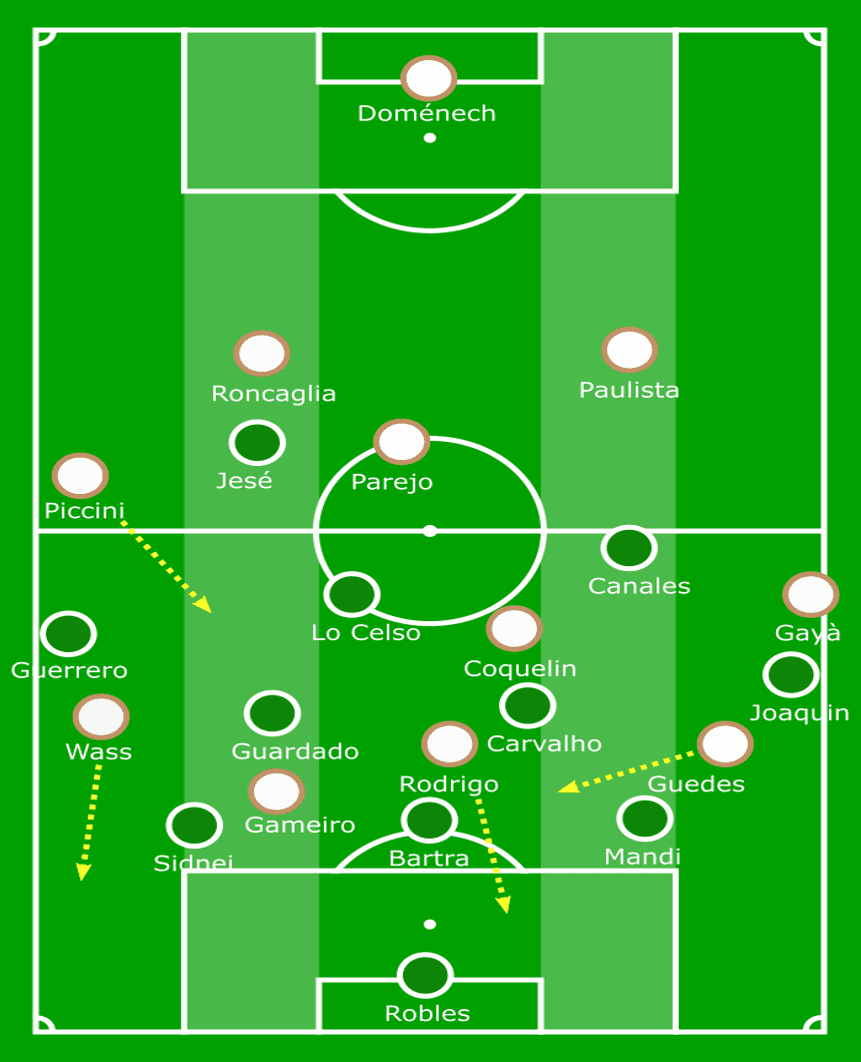
Quique Setien was relieved to have Marc Batra back fit to marshal the heart of his back three. Leaving Jesé as the only true forward, Betis boasted their regular central midfield quartet. Andres Guardado and William Carvalho played the double pivot in front of the defence. Giovani Lo Celso and Sergio Canales led the attacking midfield. The shape was not a true 3-1-4-2 but varied during the game. Betis would sometimes look like a 3-4-2-1 or a 3-4-3 looking to open up the spaces in a rigid Valencia formation.

Statistics don’t reveal the whole picture
This fixture cannot be judged purely on statistical figures and needs to be examined more closely. In order to interpret the stats accurately, we have to understand both Setien’s and Marcelino’s strategy. Betis played their regular possession game averaging around 70% with short passes in build-up. However, Valencia created more chances from their limited opportunities.

At the end of the first half, Betis had registered six shots, four of which were on target. Valencia on the other hand didn’t manage to register a single shot on target in the first half, but scored the match-winner with their first and only shot on target. They also managed more successful dribble attempts (12) than Betis (eight).
Betis had more than double the number of passes (680) of Valencia (320). But these passes were short passes mostly played through the back line and the wide players without achieving any real penetration. Valencia had more long balls (58) than Betis (50) which were pivotal in organising quick counters. In general, Valencia were the far more clinical side which earned them a place in the Copa del Rey final.
Valencia’s defend-and-counter game plan
Although Valencia started off defensively cautious with their 4-4-2, just like the first leg, they created chances right from the beginning. They waited for an opportunity to win possession, and organise counter-attacks in waves. The front four would first attack the Betis back line aggressively, with the full-backs supporting and the team pushing up together. This segmented the Betis shape leaving the back three visibly exposed.

Valencia’s strategy upon losing possession up the pitch was to scurry back for defensive cover rather than win the ball immediately. They gave up man-oriented counter-pressing higher up and instead focused on getting numbers behind the ball. Once they were back in position they could then close the spaces and track men in their defensive third.
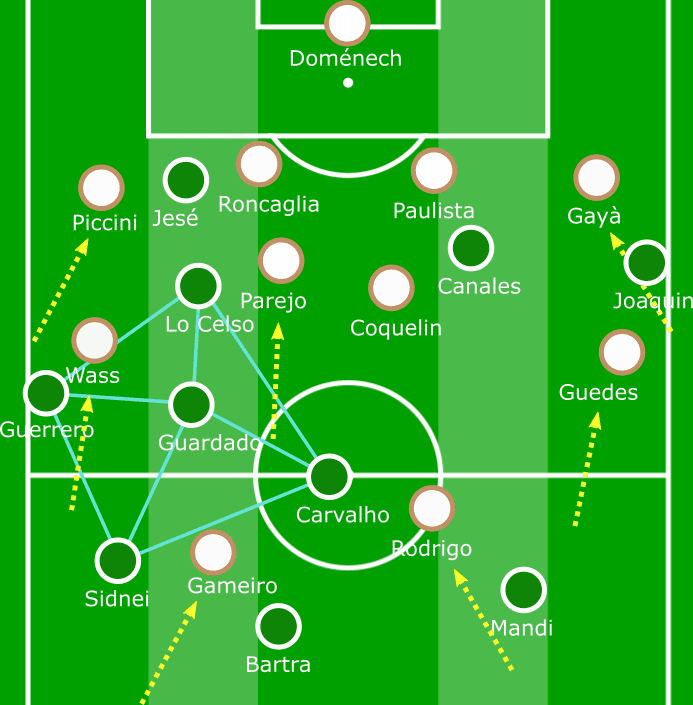
Betis built up by creating overloads where they had numerical superiority on one side of the pitch. They engaged in short passing and looked for the free man in another area of the pitch. Usually this kind of build-up involves a sequence of at least six passes or more. Only after can there be a potential opportunity to penetrate the opponent. This kind of patient build-up gave Valencia ample time to get themselves defensively organised.
Overreliance on Sergio Canales’ left foot?
Betis are known to break down teams by inviting the press and exploiting the spaces left in behind. They use short one or two-touch passing sequences to work their way around the midfield starting from a clean progression off their keeper.
However, in this game, Valencia sealed the spaces in the defence effectively. By ensuring they had most players behind the ball, Valencia were well prepared for Betis’ positional game. Betis always needed that extra touch to find viable options and became too predictable.
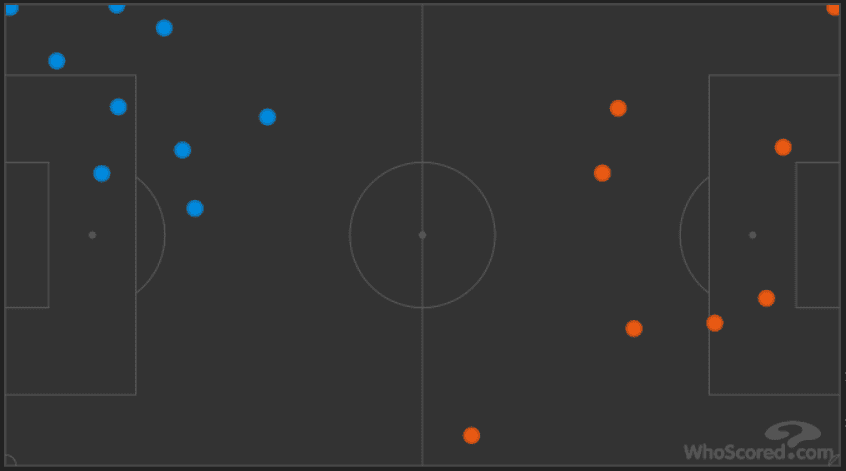
When Betis did manage to get higher up the pitch in an attacking phase, they had a prominent preference to attack from the right. Sergio Canales was the focus with his technique with the left foot to curl the ball towards the far post. Already a part of Betis’ short corner routine involving himself and Joaquín, Betis seemed creatively stifled betting all their money on an idealistic Canales’ curler.

The absence of seasoned forwards for Betis like Loren Moron and Sergio Leon also played a role in their lack of dynamism up front. Jesé and Lo Celso were man-marked, and without having the freedom to drop deeper to receive passes weren’t viable options to create chances for Betis.
Rodrigo and Gameiro combination clicks again for Valencia
The front duo worked brilliantly for Valencia during the first leg when Gameiro was brought on. They continued to create problems for the Betis defenders in this leg too. Had it not been for Marc Bartra’s presence, Betis could have found themselves in a lot more trouble.

Gameiro often dropped deep after running at the Betis defensive line first. Marc Bartra was primarily assigned to track Gameiro dropping short in the space around the Betis defence. Daniel Wass played a crucial role here with his movement off the ball. By pinning Sidnei and Francis Guerrero with his runs, he created space for others around him to work with.
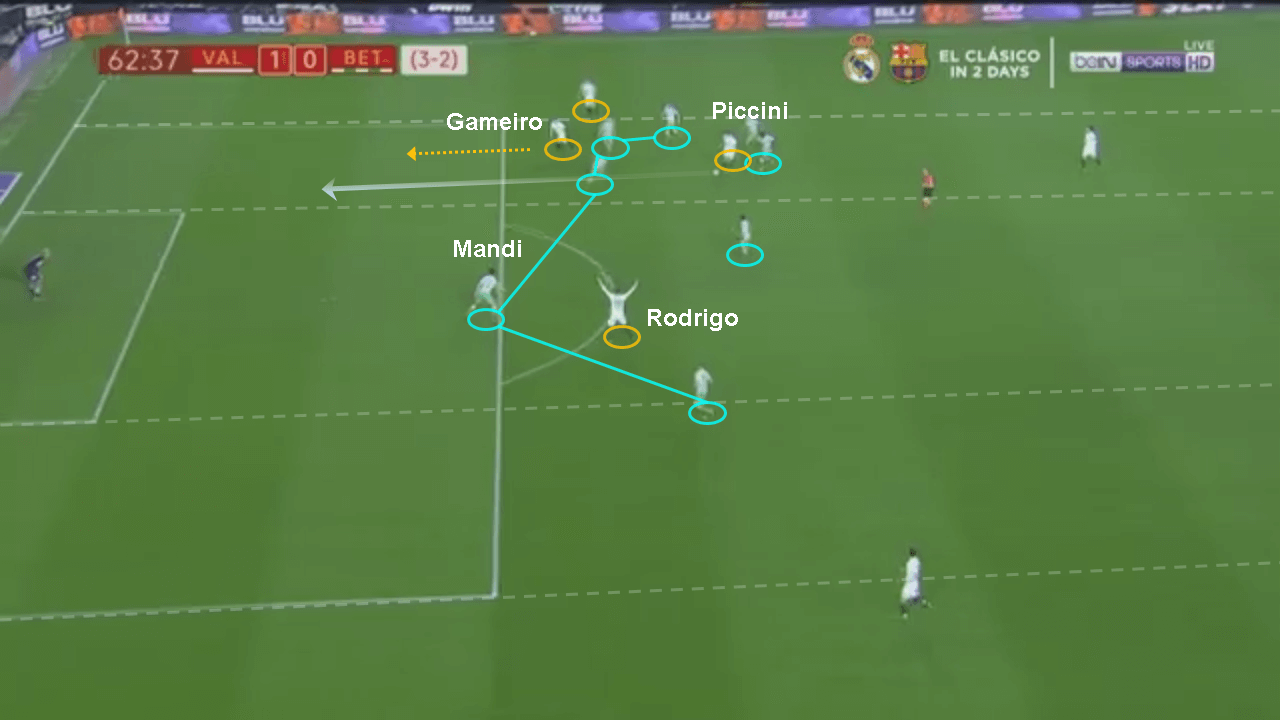
Valencia’s winning goal was yet another product of Gameiro and Rodrigo’s partnership after Cristiano Piccini’s clever through-ball in the right half-space.
Valencia’s positional implementation of full-backs
A significant highlight of Valencia’s strength to keep Betis at bay was their intelligent use of their full-backs. José Luis Gayà and Cristiano Piccini were fundamental in supplementing Valencia’s counter-attacks. Gonçalo Guedes was able to operate in the left half-space thanks to Gayà’s positioning, and provided three key passes. The full-backs followed the first wave of attack led by the front four, compelling Betis midfielders to track back hastily.
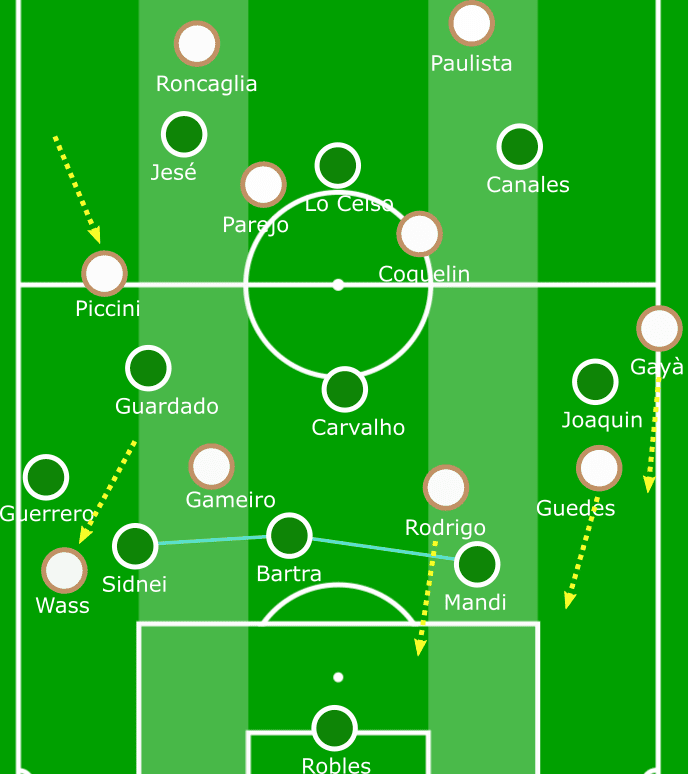
Gayà provided width by overlapping Guedes on the attack, and occasionally made inverted runs to pin back Joaquín and Carvalho. Piccini almost always attacked the right half-space working off Wass’s run to pull the Betis defenders out wide. He created two chances with through passes, one of which resulted in Rodrigo’s goal.
Valencia’s positional mastery of the half-spaces enabled them to transition from counter-attack into the attacking phase effectively. Betis were forced back deep due to Valencia’s fullback movement.
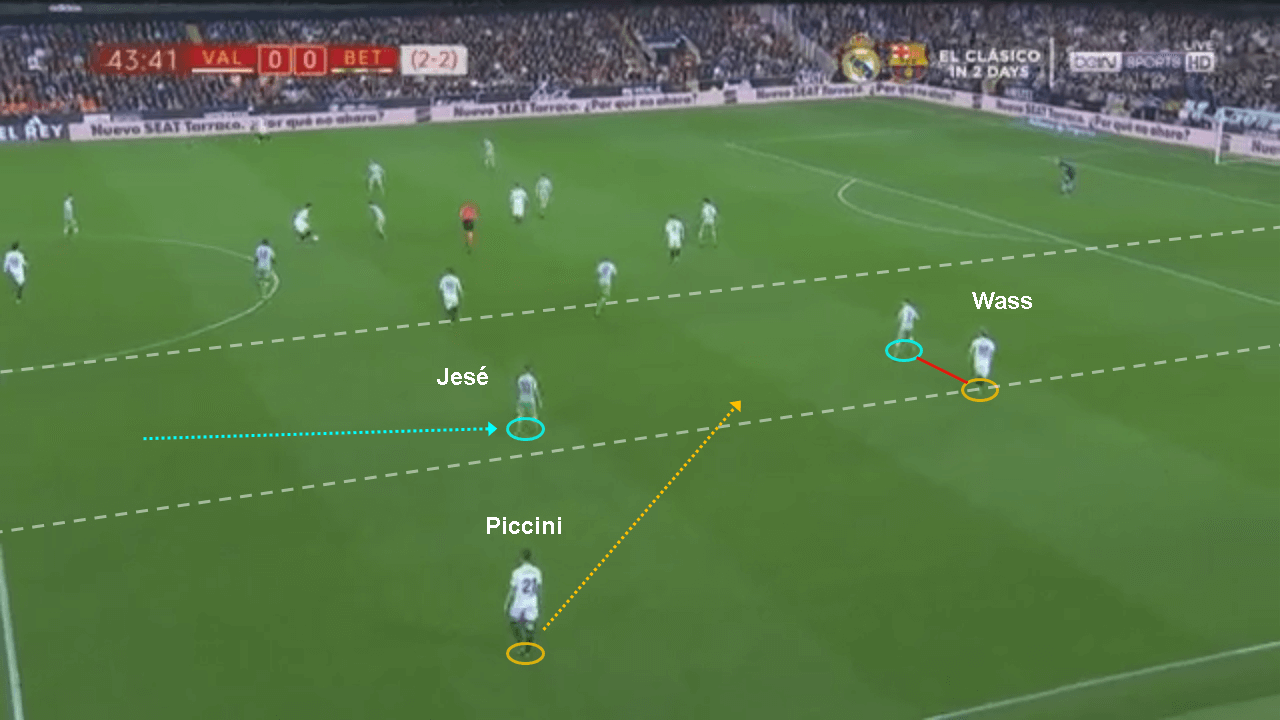
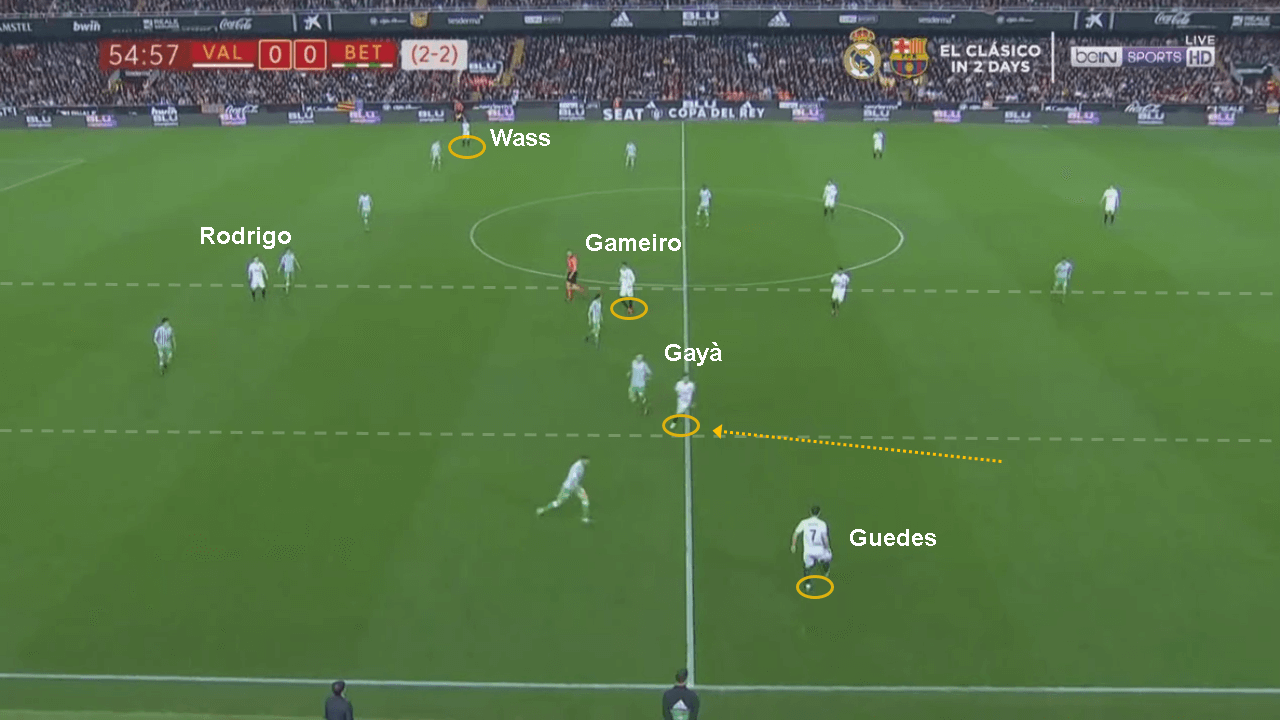
Betis run out of time
Valencia were admittedly fortunate with the timing of their goal. Betis looked threatening at many instances during the game, but failed to convert them. Valencia seized the golden opportunity that they created on the hour mark and clinically converted it. Their one-goal lead put them further ahead on aggregate considering away goals. This meant Betis had to score twice which put a lot of pressure on Betis.
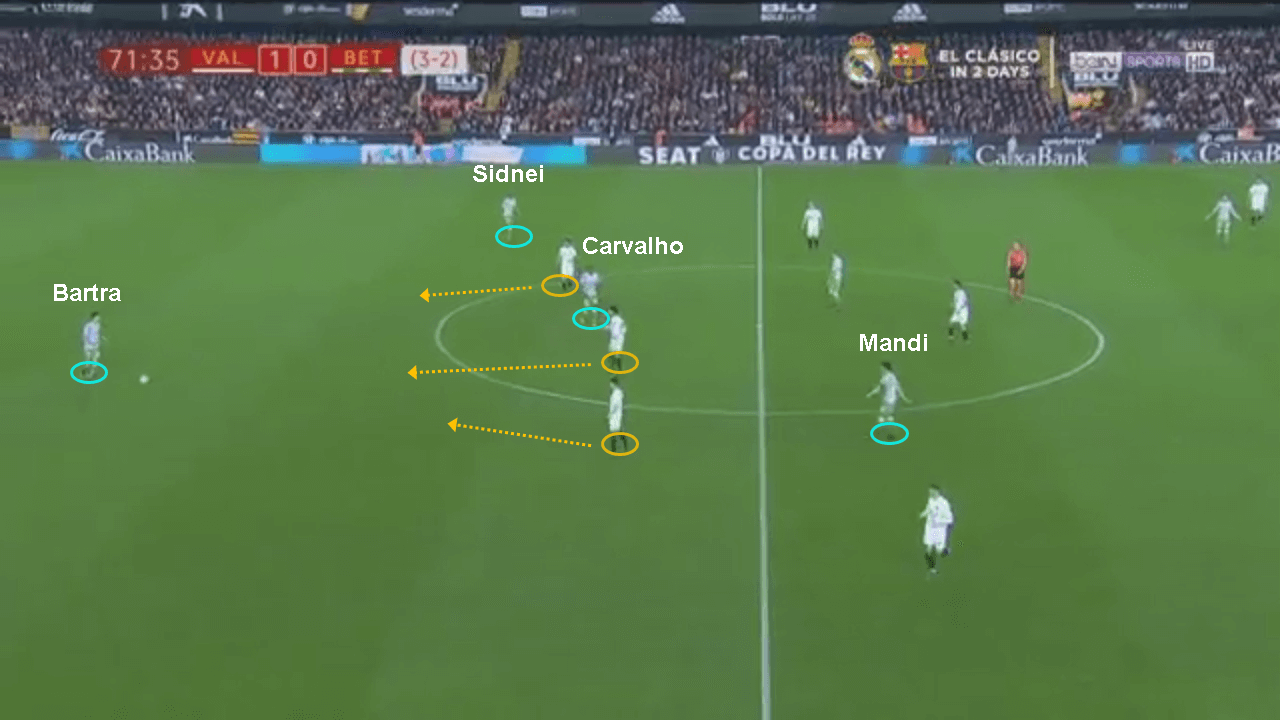
After securing the lead, Marcelino shut the door on Betis. By bringing on the versatile midfielder Cheryshev for the goalscorer, he fortified Valencia’s midfield block. Setien was forced to think outside the box.
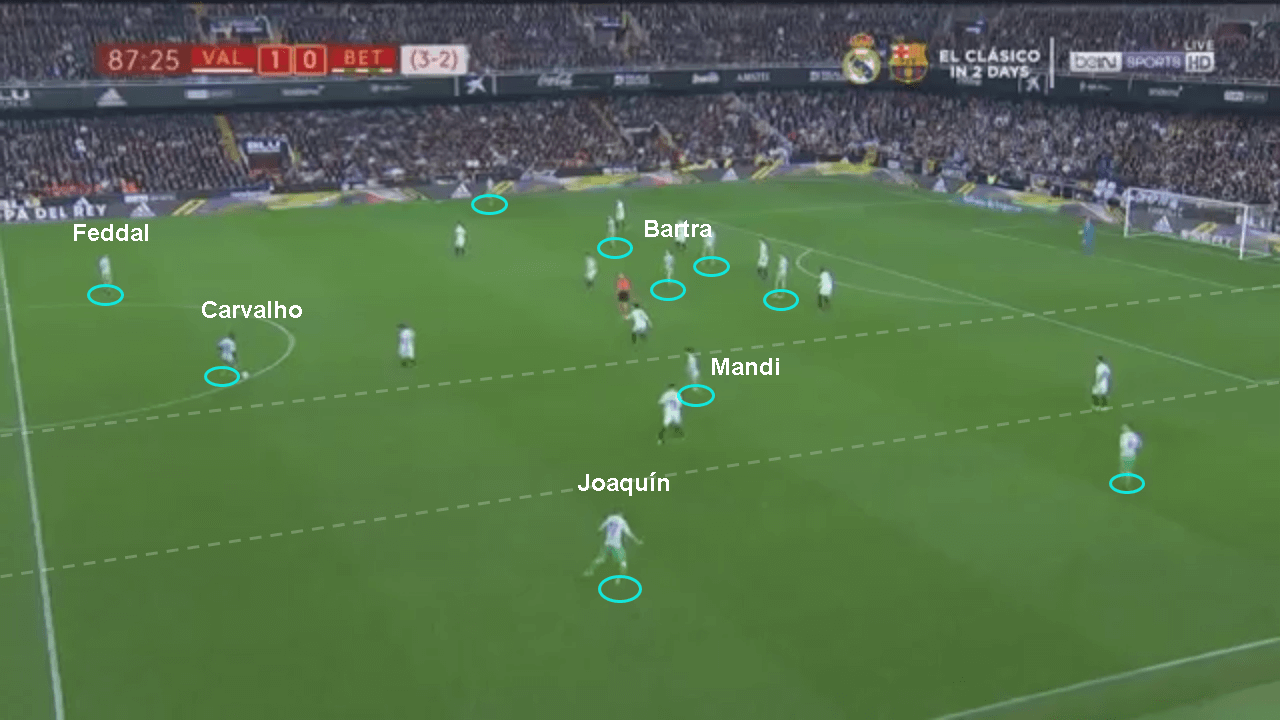
He managed to improvise in the final quarter of the second period, moving Bartra and Aïssa Mandi higher up to overload the midfield. This strategy showed signs of yielding results, but Betis consequentially ran out of time going down with a respectable fight.
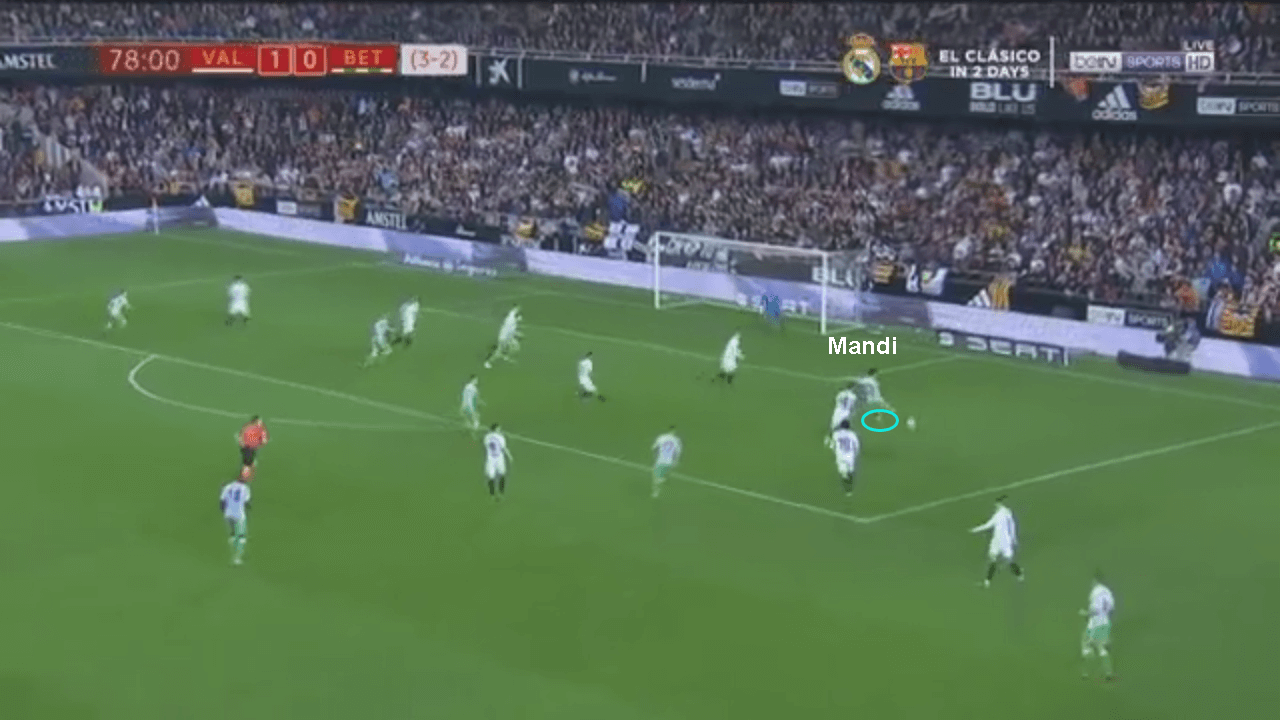
Roncaglia and Paulista were resilient in defence, tallying 11 clearances in total at the back together for Valencia. Throughout the game, Valencia displayed a consistent defensive performance with crucial interceptions and clearances, especially in the final minutes with Betis trying all measures to equalise. They also managed to neutralise Betis’ key playmaker, Giovani Lo Celso

Conclusion
Although Betis continue to impress fans and proponents of attractive football, they struggle with adapting their game model to different types of opponents. They repeatedly struggle with certain type of systems, similar to their defeat to Stade Rennais in the Europa League.
Marcelino remarked that this game would belong to the team that played better defensively, and proved his point with this textbook performance. One word to sum up Valencia’s game is ‘clinical.’ Although it is debatable whether the same tactics will contain Barcelona’s attack boasting the likes Lionel Messi, Luis Suarez and Ousmane Dembélé in the final, their La Liga encounters this season have ended in draws.
Nonetheless, Valencia have earned a taste of the Copa del Rey final after 11 long years. Having been knocked out of the tournament last season by Barcelona, this season’s final promises to be nothing short of a dramatic spectacle.
If you love tactical analysis, then you’ll love the digital magazines from totalfootballanalysis.com – a guaranteed 100+ pages of pure tactical analysis covering topics from the Premier League, Serie A, La Liga, Bundesliga and many, many more. Buy your copy of the February issue for just ₤4.99 here, or even better sign up for a ₤50 annual membership (12 monthly issues plus the annual review) right here.

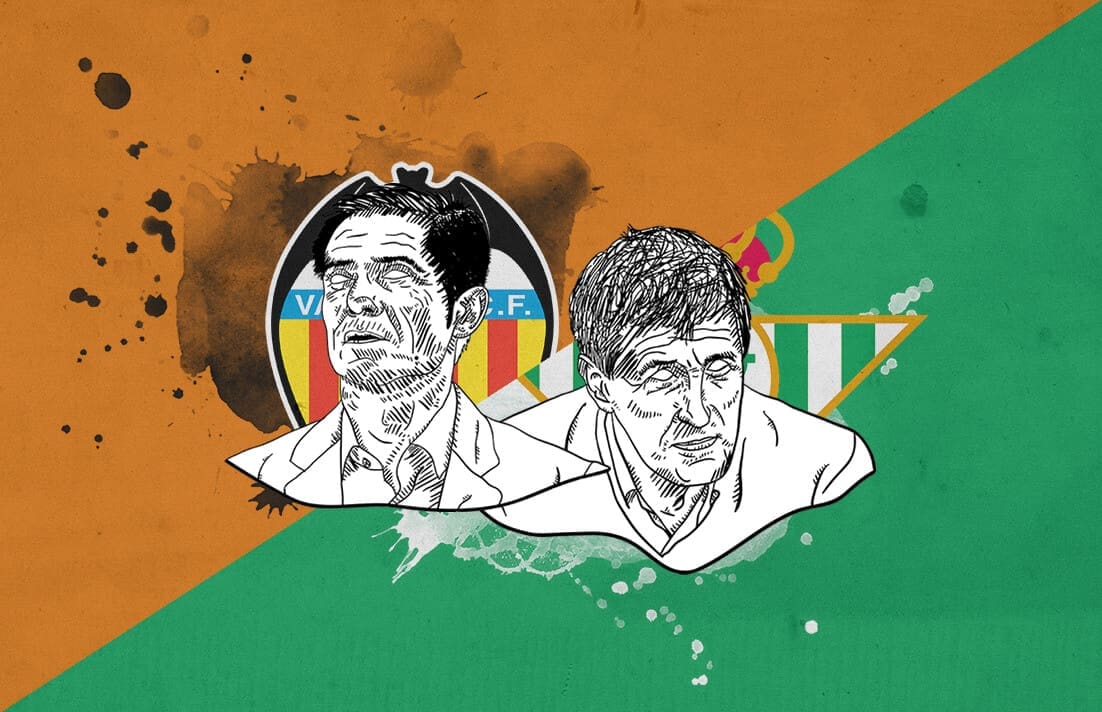



Comments